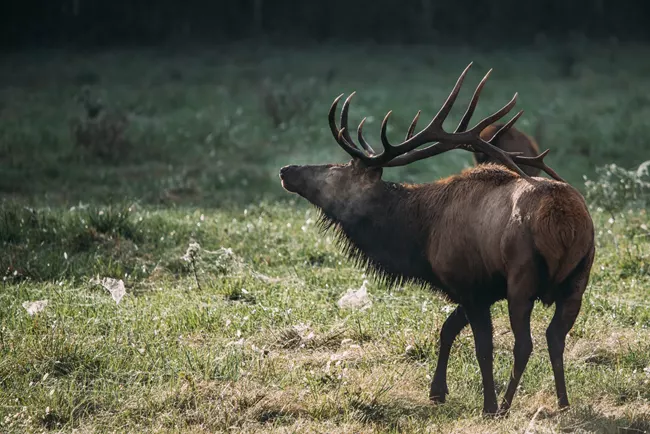Finding an empty table was going to be a chore. The Dinner Bucket café was filled with noise and big burly guys wearing bright orange. The pick-ups outside contained enough weapons to start a small war. Getting breakfast in a small, rural town on the first day of deer season is not an easy task. Conversation ebbed and flowed as men gulped down pancakes, eggs, and bowls of biscuits and gravy. Many stories were exchanged back and forth, some probably true. Many of the men had success that morning; an astounding number reported that they had harvested two or more deer this season. This was not always the case.
When pioneer’s arrived in Arkansas wild game abounded. There was plenty turkey, duck, elk, and even some buffalo. An unknown number of panther, cougar, and wolves roamed the forest accompanied by an estimated 50,000 black bear. Bear were so plentiful that Arkansas was known as the bear state during the period of early statehood.
Frederick Gerstaecher, an early explorer and author, described Arkansas as a hunter’s paradise. He describes hunting deer in Pulaski county and being able to kill three or four a night using torchlight. Another explorer, George Featherstonhaugh, an 1834 visitor to the state, describes the wasteful slaughter of deer with people killing the deer, cutting of the haunches, and leaving the rest for the buzzards. As the state grew, more and more deer were killed. Professional hunters killed deer by the hundreds and sold the meat through local markets. The deer population plummeted. In 1916, realizing that deer were about to become extinct, the state created the Arkansas Game and Fish Commission (AGFS). At that time, it is estimated that there was perhaps as few as 2,000 deer in the entire state. A hunting season was established and a bucks-only law went into effect. Franklin County, a prime hunting area today, could not locate one deer in the county in 1926. Extensive flooding in 1927 resulted in deer being pushed into small areas of high ground where they were easily hunted, especially by professional using hounds. By 1930, less than 500 deer could be found in the state. Talking to people who survived the depression, they stated there were no large animals to hunt for food. Instead, they subsisted on squirrel, possum, and raccoon.
The federal government began to establish large refuges on public lands- areas where no deer could be hunted. The AGFC started a deer restocking program and the numbers began to increase. By 1946, there were 32,000 deer in the state. Established seasons and limited harvest continued to increase those numbers. Even in the 1970’s, deer harvest was scant and my dad was extremely pleased when he killed a small four-point.
In 1939, only 540 deer were harvested, in 1945 there was some 3,000 killed. It is estimated that the deer population in Arkansas today exceeds one-million animals. In recent years, over 200,000 deer a year are legally killed in Arkansas. Recently, I spotted 28 feeding in one large pasture, grazing like a herd of cattle.
AGFS has shown similar success with the black bear population. After reintroduction in the state, numbers have rebounded to a point we have annual limited hunts. Real enjoyment is to travel to Boxley valley and observe the huge elk as the travel along the Buffalo River uplands. It was reported that the last known buffalo in the state was killed in Saline County right after the Civil War and I am still waiting to see some of those majestic animals roaming the forests and highlands of the state. Their peaks surrounded by high cliffs and limited access to the top, Rich and Magazine mountain would serve as an ideal location for a small herd.
Breakfast and the company is enjoyable. I find the tall tales about hunting prowess and the ability to kill two deer in a season hilarious. Heck, my friend’s wife kills more that with her car each year.







